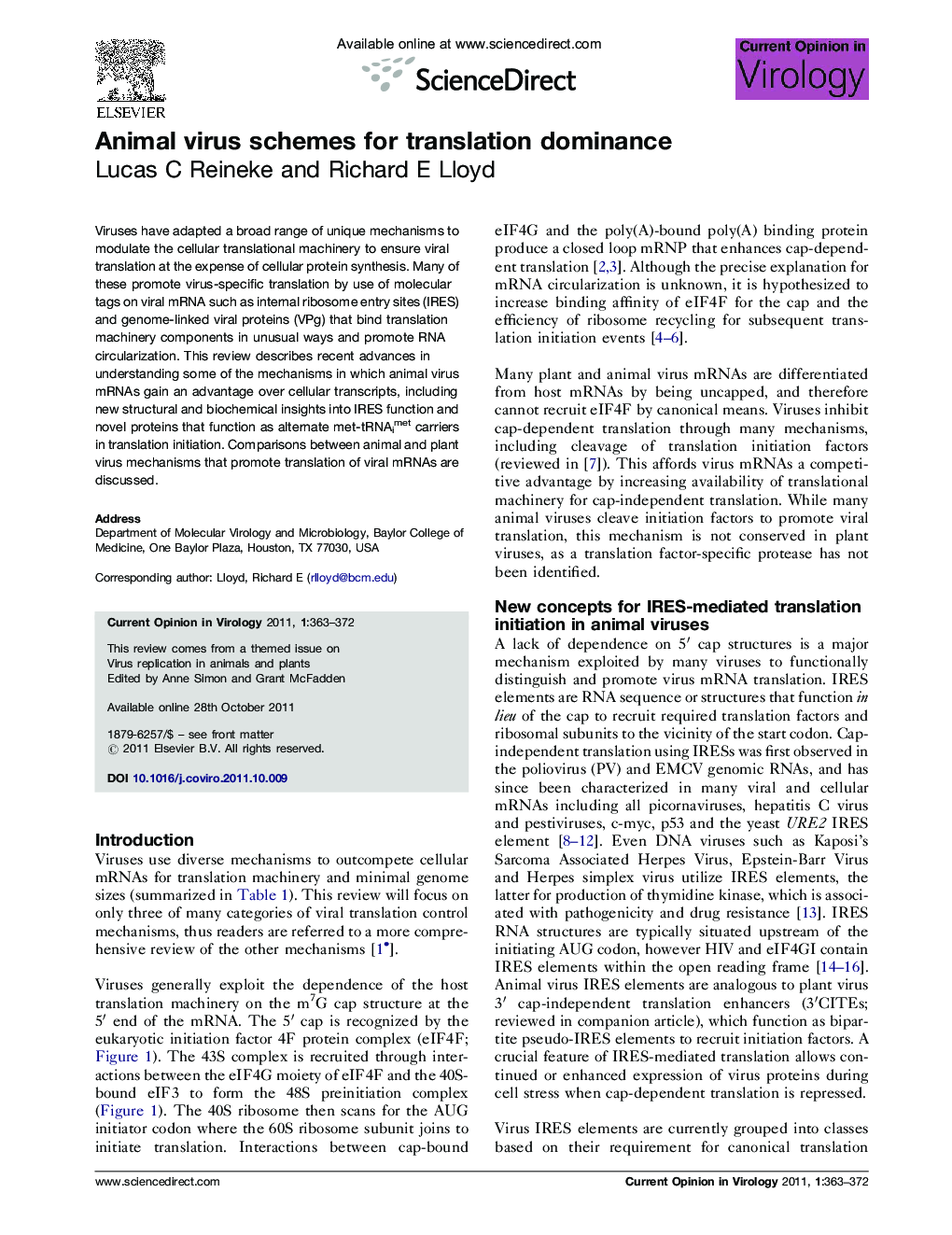| Article ID | Journal | Published Year | Pages | File Type |
|---|---|---|---|---|
| 2473565 | Current Opinion in Virology | 2011 | 10 Pages |
Viruses have adapted a broad range of unique mechanisms to modulate the cellular translational machinery to ensure viral translation at the expense of cellular protein synthesis. Many of these promote virus-specific translation by use of molecular tags on viral mRNA such as internal ribosome entry sites (IRES) and genome-linked viral proteins (VPg) that bind translation machinery components in unusual ways and promote RNA circularization. This review describes recent advances in understanding some of the mechanisms in which animal virus mRNAs gain an advantage over cellular transcripts, including new structural and biochemical insights into IRES function and novel proteins that function as alternate met-tRNAimet carriers in translation initiation. Comparisons between animal and plant virus mechanisms that promote translation of viral mRNAs are discussed.
► Animal viruses have many diverse mechanisms to assert translation dominance in cells. ► Viral IRES elements are diverse in structure and sequence but interact with initiation factors and/or ribosomes similarly. ► Viruses use alternate proteins to deliver initiator methionyl tRNA to ribosomes after inducing eIF2a phosphorylation. ► Some viruses may use long range RNA interactions to modulate translation.
